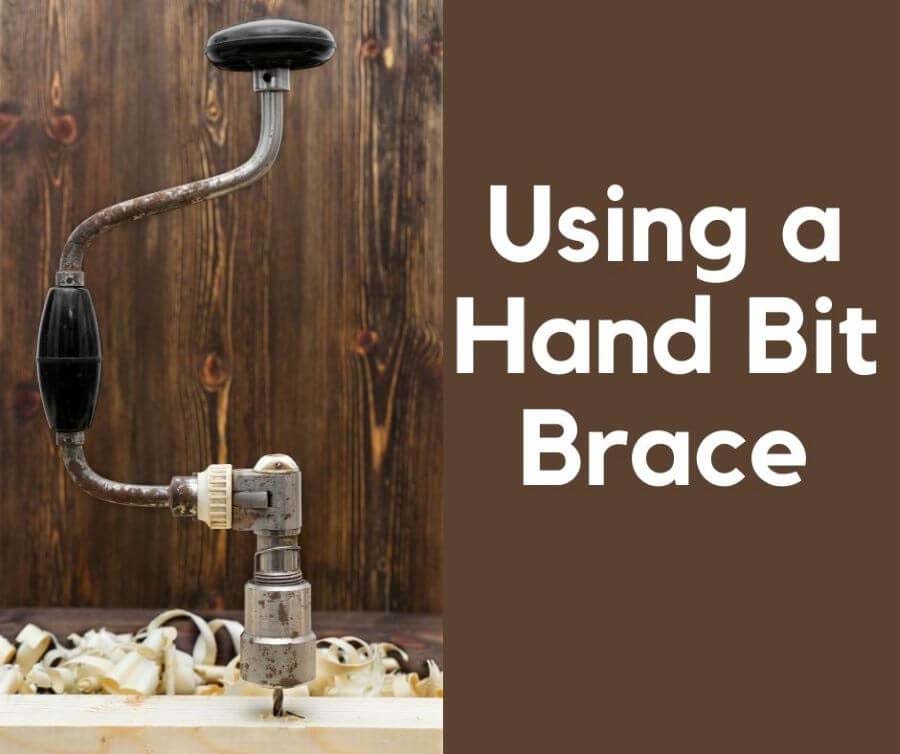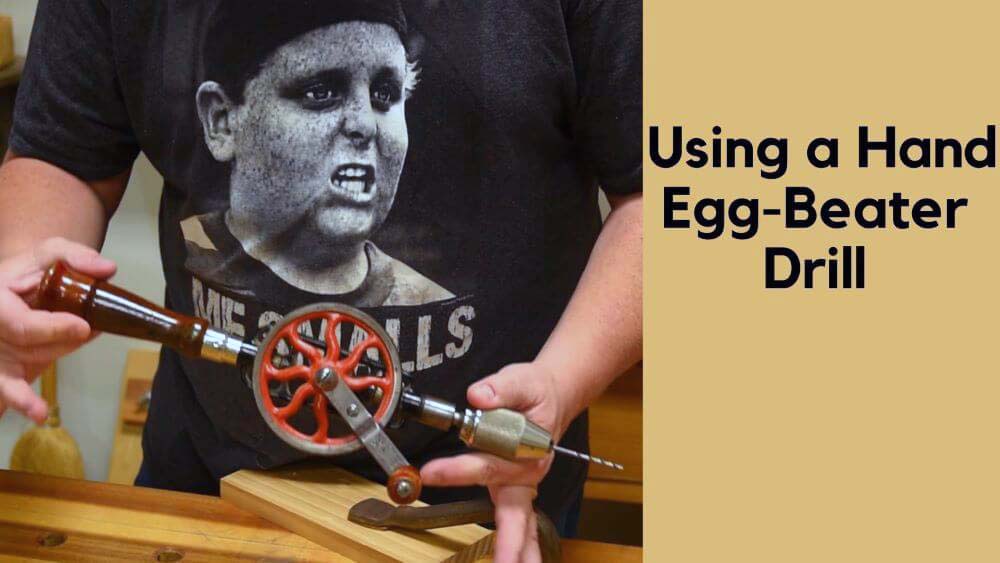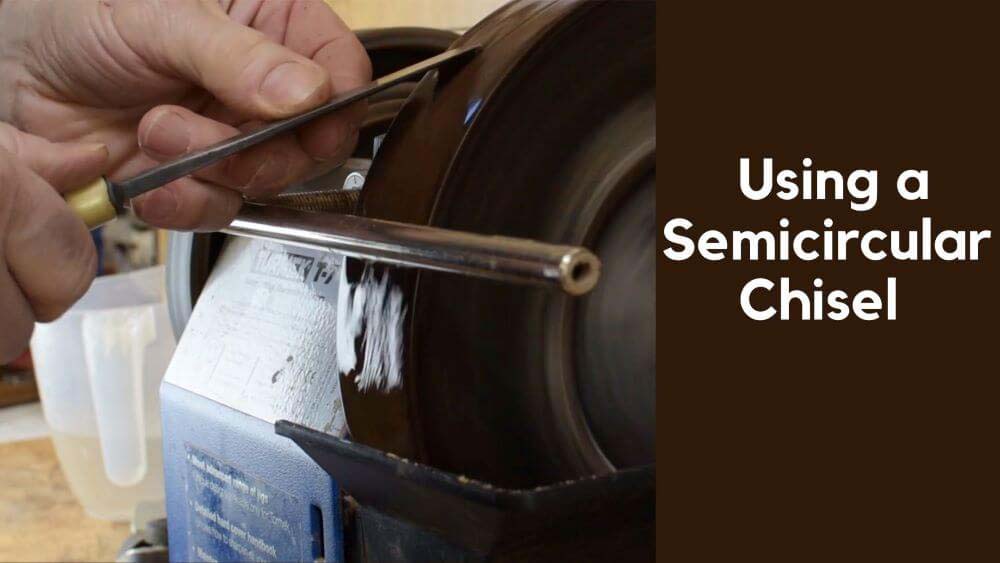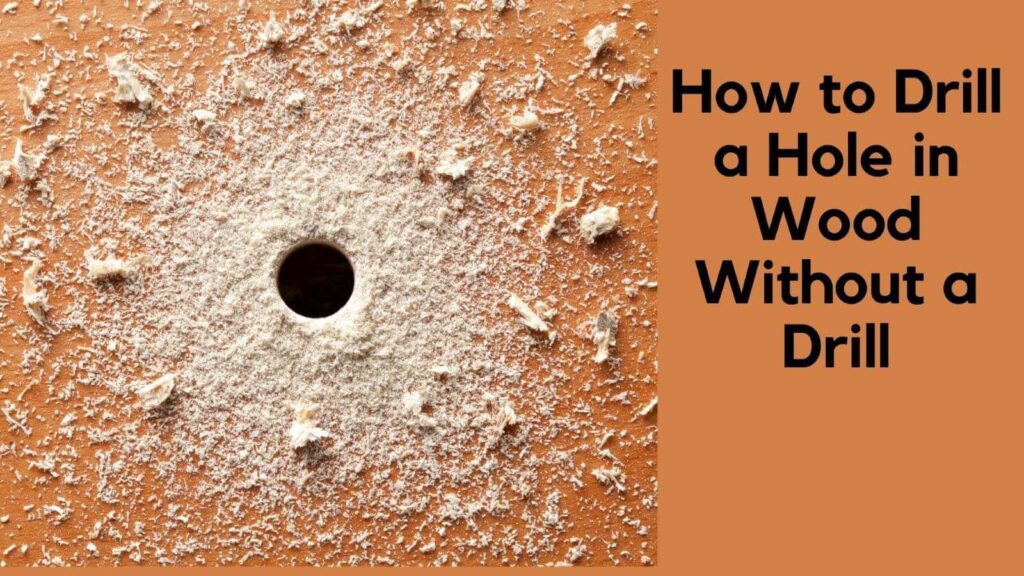Drilling holes in wood is a common task in woodworking, DIY projects, or simple home repairs. However, what if you don’t have access to a drill or just want to explore traditional methods? Fortunately, there are several easy and safe techniques to drill a hole in wood without using a modern power drill. In this guide, we’ll explore six simple methods, safety precautions, tips for success, and the benefits of no-drill techniques.
Table of Contents
6 Best Easy Method to Drill a Hole in Wood Without a Drill
Now, let’s review a few methods for screwing or drilling into work without using an electric drill. These methods will undoubtedly need much effort and time. I’m going to discuss them in terms of their usability.
Method 1: Using a Hand Bit Brace
A hand bit brace is an old-fashioned yet effective tool that uses manual effort to bore holes into wood. It’s an excellent alternative to modern drills, especially when working on small or medium-sized projects. The bit brace consists of a U-shaped handle and a chuck that holds the drill bit.

- How to Use: Place the drill bit in the chuck and tighten it. Hold the top of the bit brace with one hand and rotate the handle with the other. Apply steady pressure to the wood while turning the handle.
- Best For: Small to medium holes, usually for screws or dowels.
Method 2: Using a Hand Egg-Beater Drill
Another old-school tool, the egg-beater drill, works similarly to its kitchen counterpart. It has a crank handle connected to a gear mechanism that rotates the drill bit. This method is more user-friendly and quicker than a bit brace, ideal for smaller jobs or when you’re in a hurry.

How to Use: Insert the bit into the chuck and start rotating the crank. Apply gentle pressure while keeping the drill steady.
Best For: Light-duty projects requiring small holes.
Method 3: Using a Simple Hand Drill with a Chuk
A hand drill with a chuck is a lightweight manual tool, perfect for drilling smaller, precise holes. It’s compact and easy to carry around, making it suitable for quick repairs or small DIY jobs.

How to Use: Secure the bit in the chuck, then rotate the handle to bore the hole. Make sure to keep steady pressure and work slowly.
Best For: Small, precise holes where a hand drill’s simplicity comes in handy.
Check Also: Easy Ways of Drill Straight Without A Drill Press
Method 4: Using a Semicircular Chisel
A semicircular chisel is typically used for carving wood, but it can also be used to create holes by hollowing out wood. This method is effective for larger, irregularly shaped holes and requires precision and skill.

How to Use: Mark the spot where the hole will be. Position the chisel on the wood and hammer it gently to carve out the wood. Keep hollowing out the wood until the hole is formed.
Best For: Larger, irregular holes or when you want to avoid using mechanical tools.
Method 5: Using a Burning
Burning wood is an ancient technique used to create holes without cutting or drilling. By using a heated object, such as a metal rod, you can burn a hole through the wood. This method is suitable for small to medium holes and is ideal for rustic or traditional projects.
- How to Use: Heat a metal rod over a flame and press it into the wood. Keep applying the heated rod until the hole is the size you need.
- Best For: Small to medium-sized holes in softwood, giving a rustic, handcrafted look.
Method 6: Using the Fire Drill
A fire drill is a primitive tool that uses friction to generate heat, often used for starting fires. However, it can also be adapted for drilling holes in wood. The tool consists of a spindle (a stick) and a flat board.
- How to Use: Place the spindle on the wood and rotate it rapidly by hand or with a bowstring to create friction. This friction will eventually burn through the wood, creating a small hole.
- Best For: Small holes, particularly in softwood, and projects that favor traditional craftsmanship.
Read More: Hang a Clock on a Wall Without Drilling
Safety Precautions
- When using manual methods to drill holes in wood, safety should always be a priority. Here are some key precautions to keep in mind:
- Wear protective gear: Always wear safety goggles and gloves to prevent splinters, burns, or accidental cuts.
- Secure the wood: Clamp or secure the wood to a stable surface to prevent movement during drilling.
- Control your pressure: Don’t force the tool; let it work at its own pace to avoid slipping or injury.
- Use sharp tools: Dull tools are more dangerous because they require more force and are harder to control.
- Work in a well-ventilated area: If you’re using the burning method, ensure you’re in a ventilated area to avoid inhaling fumes.
Tips for Better Results
- Mark your spot: Always mark where you want the hole to go, either with a pencil or an awl, to ensure precision.
- Slow and steady: Don’t rush the process, especially when using manual methods. Take your time to avoid mistakes or injuries.
- Start small: When in doubt, begin with a smaller hole and gradually increase the size as needed.
- Use lubrication: If you find that your tools are getting stuck, apply some beeswax or oil to the bit to ease the process.
Benefits of No-Drill Methods
- Using manual methods to drill a hole in wood has several advantages:
- Precision: Manual methods allow for more control and precision in delicate projects.
- No electricity required: These methods are ideal for outdoor or remote work where power isn’t available.
- Quiet: Manual tools are quieter than power drills, making them perfect for indoor projects without disturbing others.
- Cost-effective: You don’t need to invest in expensive power tools. Many of the manual tools used are inexpensive and durable.
What Should I Do if I Need to Drill a Larger Hole Without a Drill?
For larger holes, you can use the following techniques:
- Chiseling: Use a semicircular chisel to carve out a larger hole manually.
- Burning method: Gradually burn a larger hole by continuously applying a heated metal rod to the wood.
- Hand auger: A hand auger is a larger version of the bit brace and can be used for making bigger holes in wood manually.
Each method requires patience and steady hands but can produce excellent results without the need for modern machinery.
(FAQs) On How to Drill a Hole in Wood Without a Drill
How to Drill Without a Drill in Plastic
You can use a heated nail or pin to melt through plastic for smaller holes. For larger holes, you can use a manual hand drill or a hand saw.
How to Drill Without a Drill in Metal?
Drilling in metal without a drill requires using a hand drill with a sharp bit designed for metal. Alternatively, a punch and hammer can be used to create small holes in thin metal sheets.
How to Make Holes in Ice Without Using a Drill?
For ice, a manual ice auger is commonly used. You can also use a pick or sharp tool to chip away at the ice manually.
Can I replace the drill with a screwdriver?
Yes, for small screws or softwood, you can manually twist a screwdriver to create a pilot hole. However, this method is slow and not ideal for larger or harder wood.
Final Thinking
Drilling a hole in wood without a power drill may seem like a daunting task, but with the right tools and techniques, it’s entirely possible. From using traditional hand drills like a bit brace or egg-beater drill to more creative methods like burning or chiseling, there are plenty of ways to get the job done. By following the steps outlined in this guide and taking necessary safety precautions, you can complete your project easily, safely, and without the need for modern machinery.

Hey, I am MD Hrithik Hossain, I’m a huge fan of DIY crafts. My workshop is where I spend most of my spare time, and I’m always working on some project. To that end, I’d like to share some of my knowledge and experience with you in power tools, woodworking, and other specialized materials fabrication.
I will guide you with genuine knowledge that can assist you with deciding whether a drill is appropriate according to your requirements or not. If you want to find the best drill and know which type of drill is most suited for your needs, then I can guide you with my expertise. My passion lies in helping others find the correct products they need at an affordable price.


